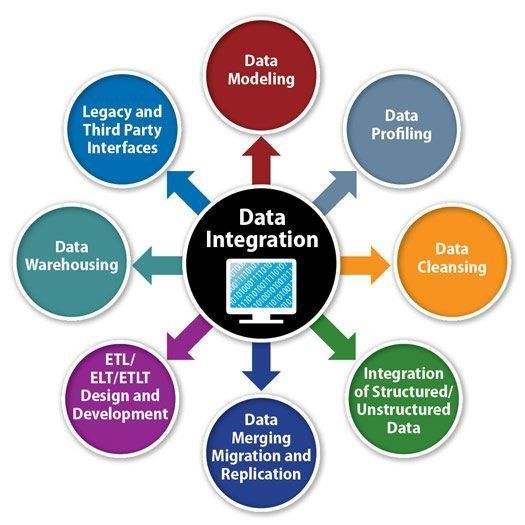
What are the main benefits of cloud integration?

What is Cloud Data Integration?
- Cloud data integration is the process of collecting data from applications, systems, repositories, and IT environments in a cloud service (say, Google Cloud, AWS, Microsoft Azure, and so on).
- The data exchange happens in real-time, and since the data is integrated into a cloud platform, it facilitates easy access over a network.
- In other words, cloud data integration involves configuring different applications such that they can communicate with each other and share big data in cloud systems.
What are the main benefits of cloud integration?
- As the name indicates, data integration brings datasets from different sources together cohesively without compromising the data quality.
- Deriving insights from complex real-time analytics requires more than one data type from more than one source.
- Assuming you are an e-commerce store or a seller on Amazon, deriving insights from data would mean combining order management, inventory, and customer data to understand your customers better.
What are the top challenges of cloud data integration?Data migration
- Cloud data integration involves transferring data between multiple cloud-based apps, systems, and databases.
- It is a complex task that is also prone to errors. It can also be time-consuming, assuming an enormous amount of data is involved.
- Further, if exceptionally high volumes of data are involved, it could even become impossible to migrate.
Compliance
- When dealing with data, it is important to comply with related regulations. Think GDPR, HIPAA, and countless other requirements.
- It is highly recommended to choose data integration software that complies with all the required regulations depending on your industry.
Security and data privacy
- Security is always a concern when dealing with the internet. If you are working with cloud data companies, you could be prone to online threats like data destruction, data theft, and ransomware.
- This is why it is important to close all backdoors. As a rule of thumb, always choose a reputed integration service provider with all the security measures in place.
Lack of standardization
- Data integration between different cloud platforms is another hurdle you need to cross. The hurdle is even bigger if you need to establish communication between the cloud and on-premise systems.
- This is because no standard protocol could make the systems communicate. This is why updating data connectors and adaptors associated with different cloud platforms and services is highly recommended.
What are some top use cases for cloud data integration?
Data lake development
Consider a data lake as a centralized repository to facilitate easy storage and processing of enormous amounts of data, whether structured, unstructured, or semi-structured.
Cloud data integration provides a cloud-hosted storage platform for meeting all your data needs, including analysis and insights synthesis.
Data warehousing
Data warehouses have been the backbone of enterprise analytics and reporting for years. However, they were not designed to handle the tons of data that today's organizations deal with.
Cloud data integration ensures you are not constrained by physical data centers and can dynamically scale up or down your data warehouses. Furthermore, cloud-based data warehouses store data in a highly structured and unified manner, ready to be used for an array of business intelligence and analytics use cases.
Marketing
Cloud data integration ensures easy access to data from different sources, thus empowering marketing teams with crucial insights. They can run hyper-personalized campaigns and deliver a wholesome experience to their target audiences.
Furthermore, cloud data integration also revolutionizes marketing campaign optimization, lead routing, real-time reporting, and more.
Customer insights
Customer data integration helps you collect and organize customer data for easy sharing. Data synchronization allows your customer support team to assist customers based on real-time data transfer. Your marketing team can further use the data for tailoring campaigns as per the customer data, and so on.